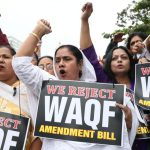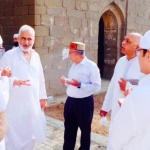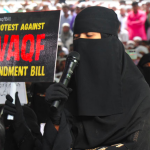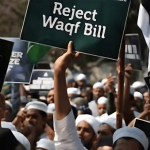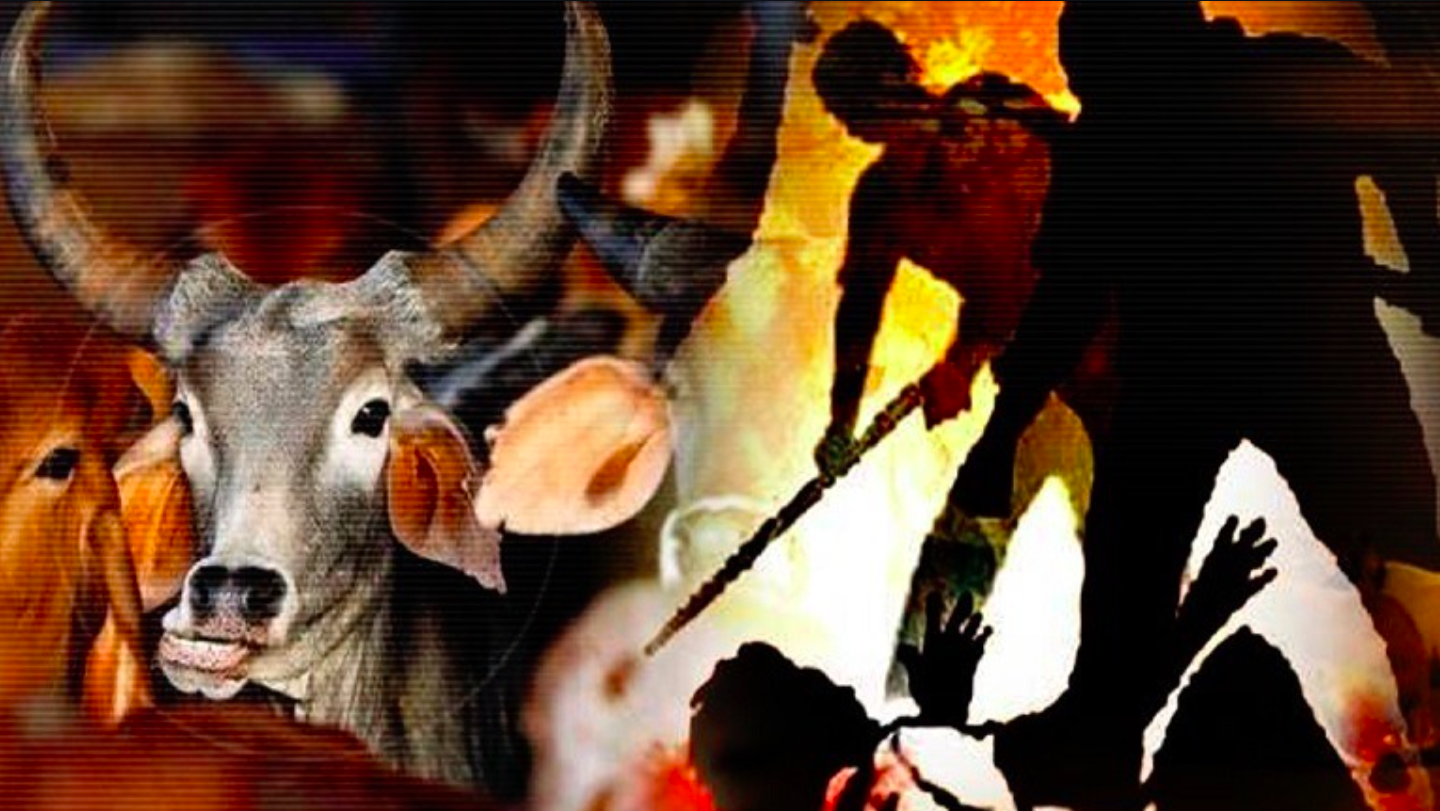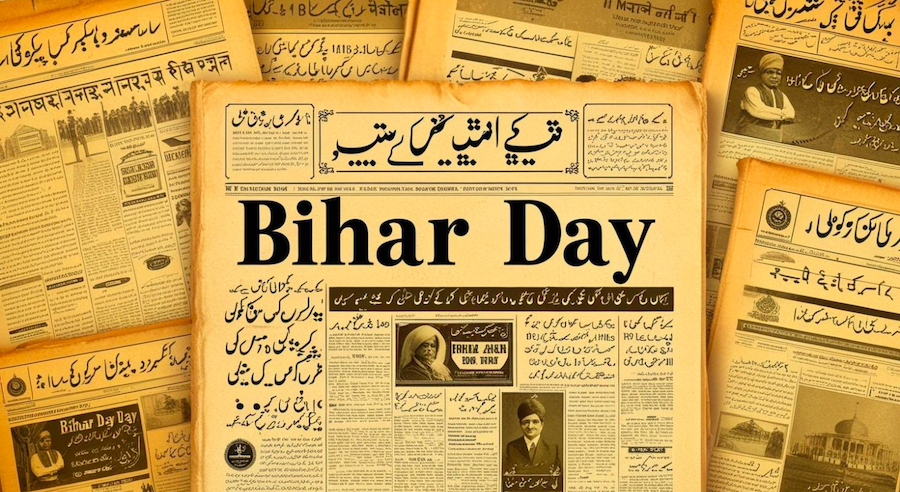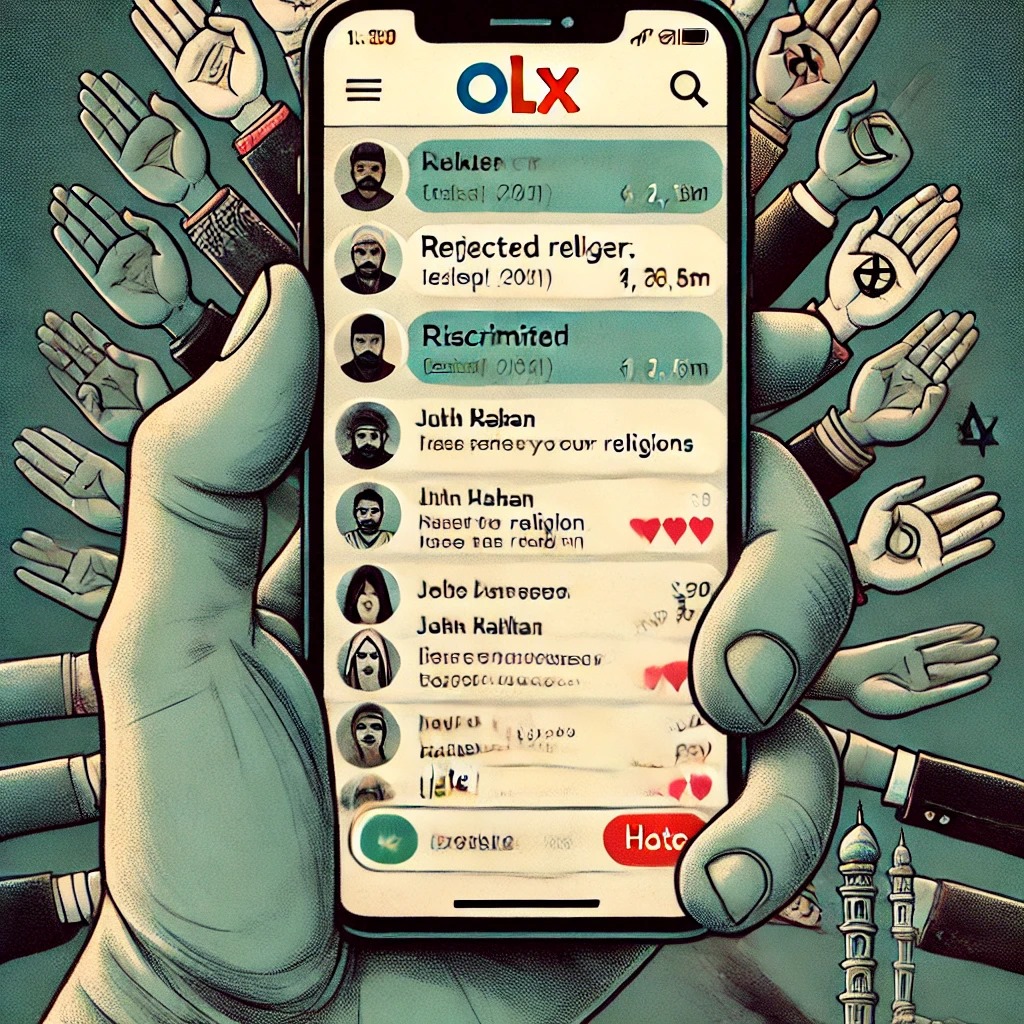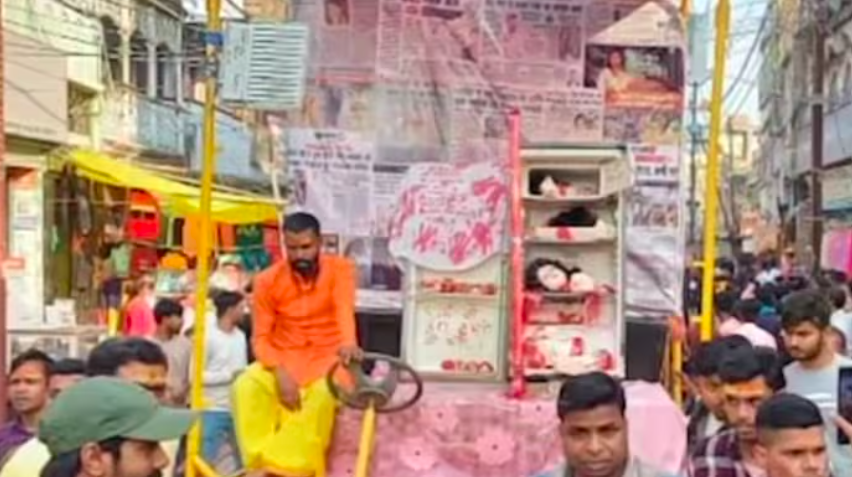Reviewed by: Yoginder Sikand
Title: Hindutva and Dalits—Perspectives for Understanding Communal Praxis
Editor: Anand Teltumbde
Publisher: Samya, Kolkata
Pages: 312
ISBN: 81-85604-75-4
Year: 2005
Price: Rs. 500
The rise of Hindutva as an ideology and political force in recent decades is a major challenge to the project of Indian democracy, secularism and social justice. Being based on Brahminical supremacism, Hindutva, as numerous scholars and activists have correctly argued, is as much, or even more, of a danger to the historical victims of Hinduism—Dalits, Adivasis and other oppressed caste groups arbitrarily included within the rubric of ‘Hinduism’—as it is to non-Muslims, such as Christians and Muslims. How, then, does one account for the alarming spread of Hindutva among the oppressed castes, whose interests it is viscerally opposed to at the same time as it rhetorically claims them as fellow ‘Hindus’? What factors have facilitated the large-scale participation of Dalits, Adivasis and other such groups, who have for centuries been oppressed by ‘upper’ caste Hindus in the name of Hinduism, in the Hindutva project? This incisive book seeks to provide some clues to these troubling questions while, at the same time, urging for a radical resistance to Hindutva, not simply on the basis of the threat that it poses to secularism and to religious minorities but also because of the enormous challenge it poses to the emancipation of the oppressed castes and their quest for liberation from caste/class oppression sanctified by Hinduism.
In his foreword to the book, noted social scientist KN Pannikar contends that Hindutva forces are committed to preserving the hegemony of the ‘upper’ caste Hindus, this being the core of their agenda. Hence, their claim of representing all ‘Hindus’, including the oppressed castes (who form the majority of the ‘Hindu’ population) is, to put it simply, bogus. An analysis of the agenda and policies of Hindutva clearly reveals Pannikar writes its inherent opposition to the material interests and cultural autonomy of the subaltern castes/classes. However, political compulsions have led Hindutva forces to project themselves as supposedly committed to Dalits, Adivasis and other such groups, whose votes are a significant factor in determining outcomes in elections. In order to maintain ‘upper’ caste Hindu hegemony intact, protest against this hegemony increasingly being articulated by the marginalized castes is sought to be snuffed out by deliberately mobilizing these caste groups against what Hindutva forces project as the menacing enemies of the ‘Hindu nation’—Muslims, Christians and Communists. In this way, these groups are used as foot-soldiers of the Hindutva brigade, unwittingly working against their own interests and in the service of their real oppressors, who consistently use them against vulnerable religious minorities, who, being mostly impoverished ‘low’ caste converts, are, objectively speaking, actually their class allies.
In his Introduction, the noted activist-intellectual Anand Teltumde argues that Hindutva is best characterized as ultra-right Brahminical fascism. Dalits, he notes, have historically been victims of Brahminism/Hinduism and of Hindu society, and Hindutva is premised on the continued oppression of the Dalits, legitimacy for which is provided in the Hindu scriptures. Analysing texts produced by key Hindutva ideologues, including the RSS top-brass, Teltumbde shows that their concept of the ideal society is one that is based on the four varnas, an inherently discriminatory and oppressive system that is sanctified as supposedly divinely ordained in the Hindu scriptures. Not surprisingly, therefore, he continues, Hindutva forces never speak of the annihilation of caste, but, rather, of the supposed ‘unity’ of castes—a seemingly alluring but deceptive slogan that actually aims at preserving ‘upper’ caste hegemony and ‘low’ caste subordination.
In pursuance of this agenda, Teltumbde notes, Hindutva forces have been active throughout India seeking to promote Brahminical Hinduism among the oppressed castes through religious outfits and supposed social service organizations, in this way destroying the distinct religious cultures of these castes, co-opting them under Brahminical supremacy, and countering radical Dalit movements that seek to challenge Brahminism and ‘upper’ caste oppression. Hinduising the Dalits makes them much more amenable to ‘upper’ caste Hindu control. This development is being accelerated by two linked processes: what sociologists call ‘Sanskritisation’, through which oppressed castes seek to rise up in the caste ladder by adopting the values, beliefs, customs and norms of the ‘upper’ castes; and the deliberate Hinduisation by Hindutva forces of the unchallengeable hero of the Dalits, Babasaheb Ambedkar.
Viscerally opposed to Ambedkar for his critique of Hinduism, his championing of Dalit liberation and the effective challenge that he mounted to ‘upper’ caste hegemony, Hindutva forces are, Teltumbde tells us, engaged in seeking to tame and domesticate the challenge he represented by falsely presenting him as a Hindu hero and as allegedly vociferously anti-Muslim. This is no novel development, though, for absorption and cooptation of ideological rivals in order to maintain Brahminical supremacy has historically been integral to Hinduism as we know it.
Hindutva fascism’s undeniable opposition to the emancipation of the oppressed castes, who form the majority of the Indian population, is well-illustrated, Teltumbe reminds us, in its vehement opposition to the partial implementation of the recommendations of the Mandal Commission Report, to scuttle which Hindutva forces unleashed the so-called Ram Janmabhoomi movement, whipping up anti-Muslim hatred across the country in order to seek to draw the oppressed castes behind the ‘upper’ caste Hindus and thus stave off the threat to the hegemony of the latter than Mandal represented. Teltumbe laments that many Dalits have been deceived by Hindutva rhetoric against untouchability and caste discrimination, and have failed to see through the Hindutva game-plan of pitting them against Muslims in order to maintain ‘upper’ caste supremacy and to advance what he considers as the very real prospect of a fascist take-over of India by Hindutva forces, with all the devastating consequences that this would have for prospects of democracy and social justice.
In his essay, Shamsul Islam highlights the commitment of Hindutva forces to a sternly Brahminical ideology and political programme as represented by the Manusmriti, the Bible of Brahminism. He provides ample evidence to substantiate his argument that Hindutva forces have no respect for the Indian Constitution’s commitment to social justice and democracy, which, in any case, are simply anathema from the perspective of the Manusmriti or indeed of the Brahminical Hindu tradition as such. As early as 1949, when the Constituent Assembly of India was finalizing the Constitution, the RSS condemned the move, and, Shamsul Islam notes, an editorial in its official organ, the Organiser, even claimed that there was nothing ‘Bharatiya’ about the Constitution, lamenting that it contained no trace of the Manusmriti, a scripture which it bombastically claimed ‘excite[s] the admiration of the world and elicit[s] spontaneous obedience and conformity’. Presumably, therefore, social justice and democracy, which are central pillars of the Constitution and are integral to the struggle for Dalit emancipation, were thus seen as ‘un-Indian’ by the RSS. (Of the Constitution of India, RSS supremo Golwalkar infamously declared: ‘It has absolutely nothing which can be called our own. Is there a single word of reference in its guiding principles to what our national mission is and what our keynote in life is? No!’). This is yet further proof, one might argue, of the Hindutva forces’ vociferous opposition to the legacy of the unparalleled hero of the Dalits and other oppressed groups, Babasaheb Ambedkar, ‘father’ of the Indian Constitution.
In 1950, Shamsul Islam goes on, adducing further evidence of Hindutva’s Manu-vadi vision, on the eve of India being declared a Republic, a certain Sankar Subba Aiyar, a retired high court judge, penned an article revealingly titled ‘Manu Rules Our Hearts’ in the Organiser, demanding on behalf of the RSS the immediate promulgation of the Manusmriti as the law of the land. This clearly indicates, Shamsul Islam suggests, that Hindutva, as an ideology and political programme, is committed to ‘upper’ caste supremacy and the continued degradation of the oppressed castes, in line with the supposedly divine commandments of the Manusmriti.
Key Hindutva ideologues, Shamsul Islam shows, have consistently eulogised the Manusmriti, which prescribes slavery for the ‘low’ castes and sanctions ‘upper’ caste, particularly Brahmin, supremacy as supposedly the will of God. Thus, VD Savarkar, the founder of the Hindu Mahasabha and the man who coined the term ‘Hindutva’, termed the Manusmiriti as a ‘scripture that is most worshippable after the Vedas’, and which, so he claimed, is the ‘basis of the spiritual and divine march of our nation’. Savarkar stoutly defended caste, proudly proclaiming, ‘the system of four varnas which could not be wiped away even under the Buddhistic sway, grew in popularity to such an extent that kings and emperors felt it a distinction to be called one who established the system of four varnas’. Savarkar approvingly quoted an unnamed authority, who, articulating the dominant Brahminical view, triumphantly announced, ‘The land where the system of four varnas does not exist should be known as the mlechcha country: Aryavarta lies away with it.’ Savarkar went even further by hailing the caste system for maintaining the supposed ‘purity’ of blood of the Hindu ‘race’, adding, ‘all that the caste system has done is to regulate its noble blood on lines believed—and on the whole rightly believed—by our saintly and patriotic law-givers and kings to contribute most to fertilize and enrich all that was barren and poor, without famishing and debasing all that was flourishing and nobly endowed.’
Like Savarkar, Shamsul Islam reveals, Deendayal Updhyaya, top RSS ideologue and editor of the RSS Hindi organ Panchjanya, termed caste as natural and practical, equating it with swadharma or one’s personal religion, with each caste following its specific ‘duties’ being ‘equivalent to the worship of God.’ Another such champion of caste discrimination was ‘Guru’ Golwalkar, second supremo of the RSS, who went to the extent of equating casteism as synonymous with the so-called ‘Hindu nation’ and deifying both. Thus, Golwalkar wrote, the Hindu society divided into four varnas represented, according to the Vedas, ‘the Almighty manifesting himself’. In this regard, Golwakar quoted the Purusha Sukta hymn in the Rig Veda as declaring that ‘Brahmin is the head, Kshatriyas the hands, Vaishyas the thighs and Shudras the feet.’ ‘This means’, Golwalkar contended, ‘that the people who have this fourfold arrangement, i.e. the Hindu people, is our God’, adding that, ‘This supreme vision of Godhead is the very core of our concept of “nation” and has permeated our thinking and given rise to various unique concepts of our cultural heritage.’
Golwalkar, like other Hindutva ideologues, refused to agree that caste discrimination was an abomination or even a problem, thus revealing an utter insensitivity to the plight of the victims of the caste system and Brahminism. ‘Persons interested in calumniating Hindus make much of the caste system’, Shamsul Islam quotes him as writing, adding that in what he regarded as the golden Hindu period, ‘all the so-called evils of caste etc were there no less marked than today and yet we were a victorious glorious nation then.’ Golwalkar went on to castigate critics of caste, contending that attacking caste had ‘nothing to do with national revival’, insisting that ‘it is none of the so-called drawbacks of the Hindu social order which prevents us from regaining our ancient glory.’ He even went to the extent of decrying Buddhism for its opposition to caste hierarchy, contending that this had paved way for Muslim onslaughts on India. Like many other Hindutva leaders, Golwalkar also criticised reservations for the oppressed castes on the specious grounds that they would lead to ‘social disharmony’ and ‘separatism’.
While Hindutva ideologues are thus wedded to Brahminical hegemony, Shamsul Islam points out that they sometimes adopt seemingly pro-Dalit stances, such as advocating temple entry for Dalits or decrying untouchability. This, he argues, does not represent any anti-caste radicalism but only a deep-rooted fear that in the absence of even such mildly reformist measures Dalits might convert en masse to other religions, which, in turn, would seriously undermine the hegemony of the ‘upper’ caste Hindu minority, which is based on its untenable claim of representing all ‘Hindus’, under which rubric the ‘lower’ castes have been absorbed in order to conjure the mythical notion of a single, monolithic Hindu majority community. Such a notion is key to preserving the hegemony of the ‘upper’ caste Hindu minority. The indifference of Hindutva forces to the plight of the Dalits and other oppressed castes is also evident, Shamsul Islam argues, from their silence on atrocities committed against them by ‘upper’ caste Hindus, which are particularly widespread in parts of India where Hindutva forces are strong.
‘Globalization’ is the favourite buzzword of the Indian ruling class-caste combine. The ‘globalization’ of the Indian economy, Anand Teltumbde argues in his essay, poses a major threat to the livelihood of millions of impoverished Dalits, who have been particularly hit by the untrammeled sway of the power of market forces that inevitably strengthen the rich and are heavily weighted against the poor. Despite their rhetorical claims of defending ‘cultural nationalism’, Hindutva forces, Teltumbde reveals, are ardent advocates of neo-liberalism and US global imperialism, which fit the interests of the Indian ruling castes/classes. Their anti-poor stance is evidenced by their vociferous support for privatization and the invasion of the Indian economy by multi-national corporations that have led to mounting inequalities in recent years and the further impoverishment of the poor, who consist largely of the oppressed castes and religious minorities, most of who are converts from the oppressed castes. Moreover, Hindutva forces have nothing to offer by way of addressing the economic plight of the Dalits. The mounting economic and social crises that the globalization of the economy is leading to, Teltumbde argues, has made the danger of a fascist take-over by votaries of Hindutva menacingly real. Hindutva, he contends, is the uniquely Indian form of fascism, and in this regard he refers to numerous Hindutva ideologues as praising Hitler and extolling fascism, which Teltumbde indicates is their solution to the upsurge of the deprived against ‘upper’ caste hegemony.
Like Hitlerism, Hindutva, too, Teltumbde points out, is viscerally opposed to democracy and social justice, and is premised on the relentless targeting of vulnerable minorities, including through large-scale violence. For this purpose, he writes, Hindutva forces have consistently sought to quash stirrings of revolt against the oppressive system on the part of Dalits and Adivasis by seeking to mobilize them against Muslims and Christians instead. This, he fears, might further accelerate as globalization further devastates the livelihoods of the poor, and the only way out is for Dalits and other oppressed sections to refuse to toe the Hindutva line and, instead, to ally with other marginalized groups, including religious minorities, as well as other progressive and anti-imperialist forces in order to challenge ‘upper’ caste/class hegemony and its Western imperialist backers.
Sandeep Pendse’s article raises central issues related to the cooptation of Dalits by Hindutva forces, focusing particularly on the crisis facing the contemporary Dalit movement. This crisis, he says, is manifested in the lack of unity in Dalit ranks; the fracturing of Dalit protest movements; the co-optation and taming of Dalit leaders by ‘upper’ caste dominated parties; the limited focus of the Dalit leadership in terms of their demands—mainly reservations in government services—while ignoring issues such as landlessness and the devastation wrought by globalization which has hit the poorest of the Dalits the most; the deliberate Hinduisation of Ambedkar by Hindutva forces in order to rob the Ambedkarite movement of its radical thrust; the lack of organic links of many Dalit intellectuals with the poorest of their communities; and the lack of an effective counter-culture to Hinduization and Sanskritization, processes that inevitably only further strengthen the caste system while at the same time providing the deceptive illusion of upward social mobility for Dalits who seek that path to rid themselves of the stigma of untouchability and ‘low’ status. All these factors have made it difficult for Dalits to resist caste oppression and the lure of Hindutva as well as the havoc caused to Dalits and other impoverished sections by ‘globalization’.
In the deadly anti-Muslim pogroms of 2002 in Gujarat, Dalits and Adivasis were instigated by Hindutva forces to attack and kill Muslims on a massive scale, this being the general pattern in what are euphemistically termed ‘Hindu-Muslim riots’ in many other parts of the country as well. The implications of the co-optation of Dalits as foot-soldiers of the Hindutva forces are brought out by well-known social activist Ram Puniyani in his incisive article.
Puniyani argues that it is the Dalits, rather than Muslims, who are the major target of Hindutva forces, because ‘upper’ caste hegemony, which Hindutva is geared to promote, is premised on continued Dalit subordination. Using Dalits against Muslims is Hindutva’s strategy of perpetuating the oppression of the Dalits, deflecting their attention from their struggles for liberation that pose a great threat to the oppressor castes/classes. Puniyani marshals adequate evidence to back his argument, including ardent defences of Brahminical supremacy and the caste system by top Hindutva leaders.
Meena Kandaswamy argues on similar lines in her essay that explores the implications of Hindutva for Dalit women. She contends that Hindutva is a form of extreme patriarchy that represents the fascist aspirations of ‘upper’ caste Aryan males. Hence, by definition, she contends, Hindutva and Dalit women are contradictory to each other. She questions the Hindutva logic of seeking to avenge for the wrongs committed by Muslim rulers in the past by pointing out that if this absurd logic were to be taken to its logical culmination, Dalits could demand that ‘upper’ caste Hindus today pay for the enormous crimes committed by their ancestors against the Dalits. Locating the roots of Dalit oppression in Hinduism itself, rather than in Hindutva alone, she points out that leading Dalit-Bahujan intellectuals, including Mahatma Phule, Babasaheb Ambedkar and Periyar, consistently opposed the figure of the Hindu god Ram on the grounds of his being both anti-Shudra and anti-women. Kandaswamy pleads for a radical cultural alternative to Hinduism, which, she contends, offers nothing but perpetual slavery for its victims—the oppressed castes.
The alarming reality of Dalits and Dalit-dominated movements and groups being co-opted by Hindutva forces is the subject of Prakash Louis’ essay. Louis cites the case of the Bahujan Samaj Party (BSP) forming a government in Uttar Pradesh with the BJP, which it had long castigated as a Maunu-vadi party. He admits that this alliance, which led to a Dalit woman becoming a Chief Minister for the first time in Indian history, may have provided a powerful symbol of empowerment to Dalits but contends that this controversial alliance may actually have also added strength to the Manu-vadi forces and their fascist agenda that is premised on Dalit oppression. Moreover, the BSP lacks a clear class analysis, which renders it unwilling or incapable of effectively taking up the substantive economic issues of the Dalit masses or in resisting globalization’s depredations.
Louis, like several other contributors to this volume, also analyses the complex web of cultural, political and economic factors that have facilitated the co-optation of sections of the Dalits by Hindutva forces and the eagerness with which many Dalits have taken to Hinduization, although the Hindu religion itself is premised on Dalit degradation. One reason for this, he points out, is the fact that Dalits are economically dependent on the ‘higher’ castes. This does not conduce to independence of thought and action, which, in any case, can easily be quashed or tamed through co-optation. In addition, Dalit radicalism has been domesticated by the state, because of which radical opposition to Brahminism is easily tamed. By failing to effectively take up economic issues that impinge on the poorest of the poor, and, instead, remaining focused mainly on symbolic issues or demands, such as reservations, that benefit only a small upwardly mobile section of Dalits, Dalit groups, Louis writes, have failed to effectively articulate a radical politics, and this, too, leaves spaces open for Hindutva inroads.
Only a consistent demand for the ‘Dalitization’ of India, Louis contends, can effectively challenge the ‘upper’ caste agenda of the ‘Hinduization’ of India. For this purpose, he writes, Babasaheb Ambedkar consistently insisted that only by abandoning the religion that sanctions the caste system could the Dalits hope to effectively counter their historical humiliation. ‘Make every man and woman free from the thralldom of the Shastras,’ Louis quotes approvingly Babasaheb Ambedkar as declaring, ‘[C]leanse their minds of the pernicious notions founded on the Shastras, and he or she will inter-dine and inter-marry without your telling him or her to do so….You must take the stand that Buddha and Nanak took. You must not only discard the Shastras, you must deny their authority, as did Buddha and Nanak. You must have courage to tell the Hindus that what is wrong with them is their religion: the religion which has produced in them this notion of the sacredness of caste.’
Ramesh Kamble’s essay covers a wide range of issues. He critiques the pervasiveness and dominance of the Brahminical perspective on Indian culture, religion and history, contending that this is reflected in dominant narratives of Indian nationalism that marginalise, co-opt, assimilate or, failing this, brutally crush, alternate voices in order to maintain Brahminical supremacy. This tendency is revealed, he argues, in efforts to Hinduize the Dalits in order to stave off the potential challenge to ‘upper’ caste hegemony that Dalit resistance to caste/class oppression might pose. This potential challenge to Brahminism is further undermined by what Kamble terms as the ‘vulgarisation’ of the legacy of Ambedkar by post-Ambedkar Dalit leaders, who have sought political power for themselves, leading them into the ruling class/caste trap and abandoning meaningful, emancipatory politics. He characterises the BSP-BJP alliance as a manifestation of this unfortunate tendency, which reflects, he argues, the BSP’s ‘reckless pursuit’ of pursue political power with ‘utter ideological impunity’, allying with the very ‘upper’ caste forces it had indentified as being primarily responsible for the oppression of the Dalits. Kamble argues that this sort of alliance, which is also evident in Maharashtra, where some Dalit formations have joined hands with the Shiv Sena, a party notorious for its antipathy for the Dalits, cannot last long, as the interests of the oppressed and oppressor castes are fundamentally opposed to each other.
Kamble pleads for Dalit groups to reconsider their politics and seek to build alliances with groups whose objective interests overlap with theirs, such as peasants, workers, and Adivasis, instead. Further critiquing groups like the BSP, he stresses the need for the Dalit movement to take up the economic issues and concerns, most notably the land question, that affect the poorest of the Dalits rather than remaining content only with raising symbolic or cultural issues or else focusing simply on reservations, which, in any case, are now increasingly being rendered meaningless as the public sector and the role of the state rapidly contract in the face of aggressive ‘globalization’.
In this regard, Kamble raises important issues concerning the relationship between the Left and Dalit groups. Noting their problematic relationship, he critiques the tendency of dominant sections of the Left to regard caste as simply a ‘superstructural’ issue, treating caste-based mobilization of the oppressed as ‘sectarian’ and ‘divisive’ and ignoring the reality of caste as a basis of oppression and exploitation. Kamble thus argues for developing an analysis of Indian society and political programme from a caste-class perspective, and here he contends that both the Dalit movements and the Left need to reconsider their positions. This, he contends, is precisely what Babasaheb Ambedkar had in mind when he argued that the oppressed had two twin enemies they would need to struggle against—Brahminism and Capitalism.
Subhash Gatade’s critique of the BSP-BJP alliance in Uttar Pradesh covers much the same ground as Kamble’s. Like Kamble, Gatade contends that this alliance of Dalit and Hindutva forces threatens to dissipate the radical transformatory potential of the Ambedkarite vision in the morass of electoral politics. He questions whether the BSP’s quest for political power by any means, including by allying with the votaries of Hindutva, can really bring about the emancipation of Dalits, especially in light of Babasaheb’s constant refrain about the terrors of ‘Hindu Raj’ for the Dalits. He contends that the BSP’s alliance with the BJP might have led to the co-optation and domestication of Dalit assertion and even to its Hinduisation. This is evidenced, for instance, in the fact that the BSP is no longer as concerned as it once was with social reform, including the struggle against Brahminism, insisting, instead, that the capture of political power would solve the problems of the Dalits and, hence, that this should be their major concern. That such a stance reflects the interests of a tiny section of politically influential Dalits, and of the Indian ruling class generally, is clear, as is the fact that it militates against the overall struggle for Dalit emancipation.
BSP-brand identity politics, Gatade argues, clearly has its limits, ignoring as it does the very real caste/class contradictions within the broader category of the ‘Bahujan Samaj’, which is reflected, for instance, in the internalization of the logic of Brahminism by vast sections of the OBCS, who, in parts of rural India, are the major perpetrators of violence against Dalits.
The BSP’s betrayal of Babasaheb Ambedkar’s ideals, Gatade indicates, is further evidenced in the manner in which the party has gone out of its way to court Hindutva fascist forces, unmindful of the fact that by doing so it is working clearly against the interests of the ‘Bahujan Samaj’. Gatade cites the instance of Mayavati’s invitation to Advani to participate in a BSP rally; her allowing the Bajrang Dal to freely give arms training to its activists; her clean-chit to Modi after he presided over the horrific anti-Muslim genocide in Gujarat, and even campaigning for him in on the eve of assembly elections in that state; and her de-emphasising the ‘Bahujan’ identity of the BSP by talking instead of the ‘Sarva Jan’ in order to reach out to the ‘upper’ castes, as clear evidence of the BSP’s deviation from the Ambedkarite vision.
Gatade regards the results of the BSP’s alliance with the BJP as ambiguous in terms of the agenda of Dalit liberation. While it has facilitated Dalit political assertion, provided Dalits with a sense of symbolic empowerment and helped them move out of the position of being lackeys of one ‘upper’ caste-dominated party or the other, the idea of the ‘Bahujan Samaj’, he contends, has not taken root at the social level, for the various caste and religious groups within this category have failed to unite, remaining deeply divided. Addressing this requires, Gatade rightly contends, a veritable cultural revolution, integral to which would be the struggle against caste and religious ideologies that justify it. This Gatade does not regard as possible for the BSP to undertake in its present avatar as long as it is willing to enter into opportunistic political alliances with the historical oppressors of the Dalits, as represented by Hindutva groups. In fact, he comments that such an alliance threatens to subvert the struggle against Brahminism and provides legitimacy to Hindutva fascism, making Dalits appear as allies, instead of opponents, of Hindutva, with enormously debilitating consequences for the struggle for social justice. Moreover, Gatade rues, the short-term success of the BSP through its alliance with the BJP has created illusions among the oppressed about the effectiveness of the electoral path as a means for Dalit liberation.
Suhas Palshikar’s essay examines the consequences of the alliance between certain Dalit groups and Hindutva forces in Maharashtra. Palshikar contends that it has resulted in the de-radicalization of Babasaheb’s legacy, conforming to the Hindutva agenda of misappropriating him by turning him into a Hindutva icon in order to legitimize ruling caste/class hegemony. This process has been facilitated by the divisions in the ranks of Dalit parties and groups, mainly caused by tussles over power and pelf among bickering Dalit ‘leaders’, with the political establishment playing them against each other so that their energies are wasted in internecine squabbles. Another cause of the weakness of the Dalit movement in Maharashtra, he avers, which has worked to the advantage of Hindutva forces, is the failure of the different Dalit castes to work together. Maharashtrian Ambedkarite groups are typically dominated by Mahars, the caste to which Babasaheb himself belonged. Feeling left out of such groups, particularly from positions of leadership, many non-Mahar Dalits have joined hands with Hindutva forces.
As other contributors to this volume also remark, Palshikar contends that the massive inroads that Hindutva forces have been able to make among Dalits also owes to their carefully planned efforts to appropriate and tame the legacy of Babasaheb Ambedkar. In order to win over the Dalits, Hindutva forces, who, when Ambedkar was alive, treated him with disdain, now claim him as their own, but in such a way as to deny his consistent opposition to Hinduism and Hindutva by projecting him, ironically and completely falsely, as a Hindu reformer and an advocate of Hindu unity—in quite the same way as the Brahminical establishment sought to undermine the Buddha’s challenge to Brahminism by claiming him to be an incarnation of Vishnu. Palshikar notes that few Dalit intellectuals sought to resist this Hinduization of Ambedkar or to warn the Dalits of the sinister consequences of Hindutva penetration among Dalits. This, Palshikar indicates, is a reflection of Babasaheb having been turned simply into an icon by Dalit intellectuals and politicians, who neglected the task of contextually reinterpreting Babasaheb and consolidating his radical legacy. Allying with Hindutva forces Dalit groups thus inflicted heavy damage to the struggles launched by Ambedkar against caste/class oppression, trivializing him while playing instrumentalist politics in his name. In this way, so Palshikar writes, Dalit politics in Maharashtra denigrated into a quest for power for self-appointed Dalit ‘leaders’, resulting in all sorts of unfortunate alliances and compromises, including with forces that were clearly against the caste/class interests of the Dalit masses. While the conditions of the Dalit masses worsened, such politics facilitated a handful of Maharashtrian Dalit ‘leaders’ into positions of power, who, in allying with the Shiv Sena, conveniently ignored the party’s longstanding antipathy to Dalits and Babasaheb Ambedkar.
The Dalit movement has experienced somewhat the same trajectory in Tamil Nadu, comments V Geetha in her paper that examines the complex inter-relations between Dalits, the Dravidian movement and Hindutva forces in that state. Geetha notes that the Tamil Dravidian self-respect movement has, in recent years, done a complete turnabout in its attitude to Hindutva. Although the very purpose of the movement was to counter Brahminical hegemony and Hinduism, Dravidian leaders in Tamil Nadu now openly consort with Hindutva forces, reneging on their glorious past. Dalits in Tamil Nadu continue to suffer various forms of degradation, including at the hands of OBC castes that are the backbone of Dravidian parties, indicating that while the Dravidian movement has politically empowered dominant OBC castes, it has failed in its historical task of emancipating the Dalits from the shackles of caste/class oppression. Moreover, it has also failed to provide a radical counter-cultural alternative to Hinduism, which the upwardly mobile OBCs still cling to despite the professed atheism and rationalism of the original Dravidian movement.
The overall disempowerment of the Dalits in Tamil Nadu—and this holds true of the rest of the country as well—is reinforced, Geetha writes, through the agency of Sanskritisation or Hinduisation, through which Dalits hope to improve their social status within the caste hierarchy, rather than challenging that hierarchy and the logic of caste itself. Hindutva forces capitalize on the allure that Sanskritisation appears to offer the Dalits, and in recent years have been active across Tamil Nadu in deliberately seeking to Hinduize Dalits to further strengthen their stranglehold under ‘upper’ caste hegemony, through setting up temples and organizing pujas in their localities, conducting religious processions and festivals in which Dalits are deliberately roped in with promises of liquor, money and a ‘good’ time, and social work projects ostensibly for Dalit welfare but aimed, Geetha contends, at Hinduising them in order to prevent their conversion to other religions, which would threaten ‘upper’ caste Hindu hegemony and deflate Hindu numbers. Geetha laments that many Dalit leaders are unwilling to concede that Hinduism is actually the root of the problem of the Dalits, fearful of alienating the masses by doing so or even because they are willing to collaborate with Hindutva forces although they are aware of their sinister designs in making overtures to the Dalits.
In Andhra Pradesh, too, writes KS Chalam in his essay, Hindutva forces have made deep inroads, and no major counter-cultural forces have emerged to challenge and resist them. The Brahminisation of the religious traditions of the Dalits, Adivasis and other oppressed castes continues unabated across Andhra, working to co-opt these communities into the Hindu fold, robbing them of their counter-cultural resources that could be harnessed to resist ‘upper’ caste/class hegemony, thereby reinforcing and strengthening Brahminism and ‘upper’ caste rule in a major way. Chalam regrets that the Left in Andhra, including even the Naxalites, have done little in terms of preventing the expansion of Hindutva, possibly because doctrinaire Marxists continue to regard caste and religion as relatively unimportant ‘superstructural’ elements destined to whither away in the face of the class revolution that shows no sign of happening. Many self-styled Marxists, Chellam alleges, continue to be Hindus in their personal and family lives. Marxist parties have thus not considered the danger of Hindutva as a major issue and so have failed to develop an effective anti-Hindutva plank even as Brahminism and Hindutva continue to rapidly expand through a vast network of self-styled swamis, babas, temples, and NGOs. Hindutva forces deliberately encourage this process, with Brahmin pujaris taking over non-Brahmin shrines and converting them into centres of propagating Brahminism in order to reinforce ‘upper’ caste hegemony, this posing a major challenge to autonomous and radical Dalit movements.
Shivasundar’s essay on Hindutva and Dalits in Karnataka sketches a similarly depressing scenario—of radical Dalit movements being co-opted by the state through allurements; of such groups being fractured into rival factions jockeying for state patronage; of a perceptible shift of Dalit groups from grassroots mobilizations to petty politicking; of opportunist Dalit leaders abandoning the path of mass struggle by joining hands with Hindutva groups for their own careerist aspirations; of the neglect by Dalit groups of Dalits in rural areas and their indifference to struggles related to land ownership that affect such Dalits the most. A radical rethinking of Dalit politics, Shivasundar contends, is the need of the hour when ‘globalisation’ continues to devastate the livelihoods of millions of Dalits and other impoverished people, and when the state, now under Hindutva rule, has become considerably more repressive, and when Hindutva forces are instigating Dalits against Muslims, pitting potential allies against Hindutva, against each other. In the absence of radical Dalit politics, frustrated Dalit youth, who find themselves devoid of any democratic political idiom to express their anguish, find the spaces offered by Hindutva forces a tempting alternative.
The book’s final chapter, by TK Ramachandran and PT John, looks at the co-optation of impoverished Adivasis in Waynad, Kerala, by Hindutva forces. Kerala, the authors note, has the largest number of RSS shakhas or units in India after Uttar Pradesh, and Hindutva forces in the state are deliberately targetting Dalits and Adivasis, seeking to Hinduise them completely and thereby silence them. Central to this project is the Brahminisation of the religious symbols, myths and shrines of these caste communities—a process that has long historical roots and which, in fact, has historically been the basis for the spread of Brahminical hegemony elsewhere as well. The authors highlight this process with the help of a single example—of a popular Adivasi shrine in Wayanad being deliberately converted into a Brahminical temple, with the hapless Adivasis being duped, through deliberately-spread rumours, into believing the claims of the alleged supernatural powers of the Brahmin priest (earlier an important VHP functionary) who was, in a planned manner, planted to take over the shrine.
The authors argue that the frightening ability of Hindutva to co-opt and domesticate subaltern communities cannot be properly understood without taking into account the deliberate micro-level manipulations of local religious traditions and worldviews of these groups by Hindutva forces in order to promote Brahminical cultural and religious norms among them and thereby appropriate, subvert or destroy their own traditions. Unless the urge of subaltern castes to seek to rise up in the caste hierarchy through Hinduisation/Brahminisation/Sanskritisation, in place of challenging the logic of caste itself which is rooted in Hinduism, is overcome, the authors seem to suggest that this process simply cannot be resisted.
By highlighting the historical and continuing contradictions between Hindutva and Dalits, the factors that have compelled Hindutva forces to seek to co-opt the Dalits, the lure that Hindutva exercises for some Dalits, leading to alliances that are in the long-run inimical to Dalit interests, the danger that the twin, mutually supportive, threats of Hindutva fascism and ‘globalization’ pose to the Dalit masses, and the clear limits of Dalit identity politics that ignores class issues, this immensely useful, informative and timely book cannot afford to be missed by anyone concerned with the Dalit movement or to Indian politics more generally. It clearly indicates that it is not just religious minorities alone, but, rather all oppressed castes/classes that Hindutva is viscerally against and whose subordination it aims at reinforcing.
This point is crucial for the struggle against Hindutva, which cannot be effectively waged simply on the grounds that it is viscerally opposed to religious minorities and to secularism. Seeking to combat Hindutva solely on the basis of a commitment to secularism and the protection of religious minorities is an extremely limited approach and can hardly enthuse those—the vast majority of Indians—who do not belong to what are considered to be religious minority communities.
For the struggle against Hindutva to be broad-based and effective, this book very clearly indicates, it has to be waged on the basis of a commitment to social justice for Dalits, Adivasis and other marginalized caste/class groups, rather than simply in defence of secularism, for only then can it hope to win these groups over to the cause. Only by convincing these groups that Hindutva poses a menacing threat to their caste/class interests and their identities and cultures, and that it is not, as it hypocritically claims to be, the champion of all ‘Hindus’, can the massive inroads that Hindutva forces have made among these groups be resisted.
In making this point this book provides a much-needed corrective to the conventional, but ineffective, methodology of struggling against Hindutva suggested mainly by ‘upper’ caste intellectuals, who, unwilling to recognize the salience of caste or the oppressiveness of Brahminism/Hinduism, have typically sought to counter Hinduitva simply through sterile appeals to secularism and the rhetoric of Hindu-Muslim Bhai-Bhai.
While this reviewer personally agrees with almost all of what the various contributors to the volume have to say, some aspects that they have dealt with could possibly have merited more attention. The issue of how precisely to develop a radical Dalit counter-cultural alternative to Hinduism/Hindutva that also satisfies the perceived need of most people of religious moorings, and the precise content of this alternative, is not elaborated upon in detail, as also the issue of how the lure of Sanskritisation, that invariably conduces to the spread of Hindutva, can be effectively resisted. Some contributors note, in passing, the conversion of Dalits to Buddhism in some parts of the country as reflecting this search for an alternate identity and religious framework, but they provide few clues as to how far this has succeeded in empowering the converts and challenging the deep-rootedness of Hindu beliefs and practices among them.
Another issue that could have been dealt in greater detail is that of Muslims, Hindutva’s most visible targets. While some contributors correctly argue that the Dalits and most Muslims are, objectively class allies, with the majority of Indian Muslims being impoverished ‘low’ caste converts, the appeal for Dalit-Muslim unity to resist Hindutva that some of them appear to call for does not take into account the practical problems that such an agenda would necessarily have to face, not least the consistent opposition of well-entrenched ‘upper’ caste Muslims to this project, who are probably as opposed to the unity of ‘low’ caste Muslims and Dalits as ‘upper’ caste Hindus would be and who have consistently sought to ally with ‘upper’ caste Hindus instead. Indeed, influential ‘upper’ caste Muslim leaders and organizations are reluctant even to recognize the very existence of caste as an issue within the larger Muslim community and have consistently opposed state-sponsored affirmative action measures for ‘low’ caste Muslims. ‘Low’ caste Muslim activists contend, and rightly so, that this betrays a complete indifference to the plight of the ‘low’ caste Muslims (who form the majority of the Indian Muslims), which is linked to the ‘upper’ caste Muslims’ quest to preserve their own hegemony over the rest of the Muslim population. This being the case, it is perhaps too much to expect them to honestly and consistently champion Dalit-Muslim unity. Perhaps a more meaningful alliance that could be considered is between ‘low’ caste Muslims and Dalits, but one may well expect such an alliance to be vehemently opposed by ‘upper’ caste Muslims, in addition, of course, to ‘upper’ caste Hindus, too.
The book also fails to interrogate the politics of radical Islamism in the South Asian region and the caste/class character of Islamic revivalist movements within India that inevitably strengthen the appeal of Hindutva forces. Surely, the struggle against fascism and communalism has to be consistent, and minority communalism within India cannot be ignored or wished away. This point must be borne in mind in the context of proposals for an alliance between Dalits and Muslims to take on Hindutva and ‘upper’ caste hegemony. Typically, Islamic revivalist movements, which, in recent years, have witnessed a tremendous boost in India (in part as a response to Hindu chauvinism), are hostile to progressive thought and genuinely secular and democratic politics, being obsessed with an extremely debilitating ritualistic, communal and dogmatic understanding of religion. By and large, they are averse to caste-based mobilization and have no meaningful social and political analysis and agenda, one reason being the hegemonic control exercised by ‘upper’ caste Muslims within such movements. How Muslims, or, at least the ‘low’ caste Muslims, can be brought into an alliance with Dalits, Adivasis and other marginalized groups and progressive forces in the face of the enormous influence of these Islamic movements and organizations is an issue that the contributors have failed to consider.
That RSS/BJP/VHP-style hardcore Hindutva is not the only form of Hindutva or is uniquely oppressive of Dalits and inimical to their emancipation is recognized by many contributors to this volume, but perhaps not sufficient attention is given to the ‘soft Hindutva’ of the Congress and other ‘upper’ caste-dominated self-styled ‘secular’ parties (including self-proclaimed Marxists) which are equally inimical to Dalit emancipation, and are equally wedded to the empirically absurd notion of a ‘Hindu majority’, this being a cover-up for the continued hegemony of the ‘upper’ caste minority elite. Nor does the book deal in detail with the Hinduisation and consequent co-optation of Dalits, Adivasis and other similarly placed groups through means other than Hindutva channels—through the mass media, including Bollywood, the ‘secular’ education system (which is heavily Brahminical and which almost totally invisibilises Dalits), non-Hindutva Hindu-oriented groups such as Gandhians and even by various agencies of the supposedly ‘secular’ Indian state.
To expect a single volume to cover all these issues in detail would perhaps be asking for too much, and so one hopes other scholars, inspired by this remarkably insightful book would attempt to address them in the future.
Source: NewageIslam.com


